Originally posted: November 2009
Ed Haag talks with Ken Nedimyer, CORAL November/December 2009
In 1977, a major cold front struck the southeastern seaboard of the U.S. Snow fell in the Florida Keys and the water temperatures plunged in that normally tropical environment. Ken Nedimyer, a young reef fish collector from Key Largo, bore witness to the first of several events that, collectively, would drive the region’s most dominant species of coral to the brink of extinction.
Over the next three decades, Nedimyer’s life and the lives of his state’s threatened coral reefs have been inexorably intertwined as he, and others who share his passion for Florida’s diverse reef environment, have struggled to make sense of the mass die-off of some of the Keys’ oldest and best-adapted aquatic residents.
For Nedimyer, just understanding this new phenomenon was not enough. His objective from the outset was to use that understanding to stop and ultimately reverse this destructive process.
“Ken Nedimyer is a real-life aquaculture action hero,” says Jeff Turner, head of Reef Aquaria Design, the creator of the Smithsonian Institution’s critically acclaimed new 1,500-gallon reef aquarium. “He is doing something for our reef systems every day. He is not just talking about it.”
Such praise for a marine fish and invertebrate collector is significant—especially in Florida, where such activities are often viewed with great skepticism. But for all who know him, Nedimyer is one of those special individuals who puts much more into preserving and restoring Florida’s fragile reef environment than he could ever remove as a commercial collector of marine organisms for the aquarium trade.
Turner cites, as an example, Nedimyer’s establishment of one of the world’s first live-rock nurseries off Tavernier Key in 2001. Nedimyer was given state and federal permits to lease a designated underwater site to raise and sell live rock to his customers. The permit system was created to help compensate commercial collectors for their lost revenue after a ban on removing wild live rock was put into effect in Florida.
One of the unforeseen developments emerging from the creation of Nedimyer’s nursery was the settling of natural coral colonies on his live rock. “At that point Kenny legally owned both the rock and the coral growing on it. He had every right to sell it privately and make a lot of money,” says Turner. “Instead, he chose not to sell the coral but rather to cultivate it.”
He adds that Nedimyer willingly sacrificed short-term profit for the longer-term goal of enhancing the biodiversity of his nursery as a repository for Florida’s at-risk corals.
The nursery is now home to 3,500 stony coral colonies, many of which are Staghorn Coral (Acropora cervicornis), the once-common Florida coral that was listed as threatened under the Endangered Species Act in 2006. Nedimyer’s coral repository serves as a resource base, providing genetic stock for the propagation of stress-resistant coral strains as well as actual cuttings for reef restoration throughout southern Florida.
“Ken has worked extensively with the state and nonprofit organizations like The Nature Conservancy to guide the dispersal of corals selected for their resistance to the stressors that have caused the demise of so many of Florida’s corals,” says Martin A. Moe, Jr., the noted marine biologist and aquaculture pioneer. “Without Ken’s initial work there would be little or no coral restoration in the Florida straits.”
Nedimyer is a member of the Coral Advisory Panel for the South Atlantic Fishery Management Council and president of the Florida Marine Life Association. He is also co-chair of the Florida Keys National Marine Sanctuary Advisory Council and represents the marine life fishery and other commercial fishing interests. In addition to his involvement in the commercial side of fish collection, Nedimyer has established a nonprofit, 501c(3) corporation to expand his restoration work to other areas of the Keys and the Caribbean.
Early this year, the Florida Keys National Marine Sanctuary, along with the National Marine Fisheries Service, issued permits allowing Nedimyer to start a second coral nursery, one that will focus on propagating Elkhorn Coral (Acropora palmata), another threatened Florida native.
CORAL Magazine chatted with Ken Nedimyer over a box lunch at a coral restoration conference being held at Marathon Key, Florida, an hour’s drive south of his home in Key Largo.
CORAL: Tell us what you believe led to the massive coral die-off in the Florida Straits beginning in the late 1970s.
Nedimyer: There is no single reason for the decline. Instead, it was caused by a series of events—beginning with a number of really strong cold fronts in 1977, when it actually snowed in Islamorada and the water temperatures really dropped, killing a lot of the Staghorn and Elkhorn Corals. The ones that weren’t killed were weakened by the cold. The initial event happened in February, and by June of that year we had the first outbreak of White Band Disease.
CORAL: So that was just the beginning?
Nedimyer: Yes, following that initial event a lot more corals died. In 1980 we had a major bleaching event, and in 1983 almost all the Diadema antillarum sea urchins died off. This was followed by some very destructive hurricanes. The corals could have recovered from any one of those events, but the accumulation of all of them has forced the corals across the tipping point into a very serious decline.
CORAL: What condition are the corals in now?
Nedimyer: The dominant coral in Florida was the Staghorn. Now the population is between 2% and 3% of what it was before 1977. When a population drops to those levels, it’s tough enough to turn things around, but to make matters worse, there are other stressors out there attacking our corals. For instance, the impact of the 1983 urchin die-off on coral recovery has been grossly underrated. The loss of the sea urchins has disrupted the ability of most of these corals to reproduce successfully. Until the urchins are restored to something close to their former numbers, any success in bringing back the corals will be limited.
CORAL: How does the loss of an urchin population impact coral reproduction?
Nedimyer: The Diadema are the grazers—they scrape the microalgae off the hard surfaces and take a thin layer of the calcium carbonate. This opens up the environment for the encrusting coralline algae, which are known to produce strong (chemical) settlement cues for coral larvae. Simply put, without the urchin activity, the coral reproductive process is severely compromised.
CORAL: What you are saying is that the sea urchin is a keystone species essential to long-term reef health and viability?
Nedimyer: Some might argue with that, but from my observations I would say that is true.
CORAL: What can be done to reverse coral loss in the Keys?
Nedimyer: When you get down to the kind of populations we see now, it can be very difficult. That said, there is some good news. Unlike a boulder coral head, which takes 200 years to reach the size of a small table, a comparable Staghorn or Elkhorn thicket might be only four or five years old. In our nursery, a ¾–inch (2-cm) cutting will grow up to 15¾ inches (40 cm) of branches in a year’s time. That is one reason why we have focused our restoration efforts on these corals—we can see the results of our work in a relatively short period of time.
CORAL: I believe you were the first person to successfully develop a technique for glueing live coral cuttings to hard surfaces in order to start new colonies. How did that come about?
Nedimyer: It developed out of my daughter Kelly’s 4-H project. Originally we were going to grow coral and sell it to the aquarium trade, just like the 4-H kids up north raised and sold pigs and chickens. We never did sell any. We changed our minds halfway through and turned it into an ongoing service project that focused on outreach, education, and eventually, restoration.
CORAL: Is that option still open to those who wish to raise and sell Florida corals?
Nedimyer: Not since they were listed as a threatened species. Now, there is a federal rule that prohibits the collection, sale, or transport of these corals without a permit. Even if I were to give one to somebody, he or she would have to have a federal permit to own it.
CORAL: Can you give us an example of your coral transplanting technique being used in a restoration project, and tell us about the outcome?
Nedimyer: In 1984, the cargo freighter Wellwood ran aground on Molasses Reef in the Key Largo National Marine Sanctuary. It plowed straight in at full speed, ending up on top of the reef and smashing everything under it. At the time, this was the most popular dive reef in the world.
It took them a couple of weeks to get the freighter off and another 10 years to get any money for damages from the owners of the freighter. In 2001, they filled in some of the cracks in the reef with concrete and created 28 modules (large table-sized piles of limestone rock) to give the site some of the contours it had lost when it was flattened by the freighter.
In October of 2003, my daughter Kelly and I were given our first planting site on Molasses Reef—a module on the outer edge of the original grounding. Six corals were planted initially. Now, six years later, there are at least 500 direct descendants of those original plantings, and the site has literally blossomed. Even after three years, a change was obvious. Our corals were already providing shelter and a canopy for all sorts of invertebrates, and there were juvenile fish everywhere—wrasses, Redspotted Hawkfish, Rock Beauties—all living in our coral system.
In contrast, 15 feet away there was a module we hadn’t planted coral on and it didn’t have anything like what we had on our site—no fish, no invertebrates, nothing. There was a huge difference between the planted site and the one we didn’t plant.
CORAL: Obviously, you are passionate about the work you do on behalf of reef ecology. Does your family share that passion? Are they directly involved in restoration?
Nedimyer: Yes, my wife, Denise, and three of my four daughters have done a whole lot of on-site reef work. One daughter just doesn’t care that much for diving, but she has gone out and helped us as a team leader. They all love the coral reefs as much as I do and are excited about what is happening with the nursery and the restorations. Working together as a family has been a lot of fun.
CORAL: It is obvious from your accomplishments that your commitment to your nursery and reef restoration is huge. What has been the effect on your fish-collection business?
Nedimyer: I have been in the fish-collection business for 31 years, and it has been good to me. I know it inside out, but recently I haven’t had as much time to put into the business as I have in years past. To be honest, my passion has now moved on to reef restoration, and if I am to participate in a meaningful way in a major grant to restore coral funded by the NOAA Restoration Center with funds from an American Recovery and Reinvestment Act (ARRA) grant, I am almost mandated to divest myself of my fish-collection business.
CORAL: So what is your plan?
Nedimyer: I will continue to manage my live rock business, but I will turn the day-to-day running of my tropical-fish business over to Kara, my oldest daughter, who has worked with me for years.
CORAL: Tell us more about your new coral restoration grant.
Nedimyer: This is probably the biggest coral restoration grant given anywhere. It is a $3.3 million federal stimulus grant managed by NOAA and The Nature Conservancy to do what I have done with our nursery, but on a much bigger scale. TNC is the lead nonprofit organization on the project, but there are many others, including Mote Marine Laboratory, Nova Southeastern University, the University of Miami, Biscayne National Park, and Dry Tortugas National Park.
CORAL: From your participant list, it looks like the project will involve much more than the Upper Keys.
Nedimyer: Our ultimate objective is to have people up and down the Florida Keys building coral nurseries just like mine, growing them up to second and third generations and doing restoration projects based on what we have done up until now. The grant provides for the creation of six separate nurseries in Florida and two in the Virgin Islands. Our Foundation is going to add a ninth one in the Key West area.
CORAL: It sounds like this project will require a whole lot of volunteer manpower.
Nedimyer: No question about it. But I think there are people who would love to be part of this project—for example, CORAL’s readers. Growing up as an aquarist has shaped my life. Much of my love for coral reefs comes from owning an aquarium, reading about it, and trying to understand how to keep these critters alive. The aquarium community is so in touch, so well informed, it would be great to get them down here, working with us to help turn the clock back on these reefs.
Text/images: Ed Haag, Coral Magazine
Contact:
Coral Restoration Foundation
Key Largo, Florida
http://www.coralrestoration.org
Nonprofit educational organization active in reef restoration and coral cultivation; conducts workshops on propagating and reestablishing threatened stony corals.
Sea Life Inc.
PO Box 712
Tavernier, FL 33070
http://www.sealifeinc.net
The Nedimyer family’s collection business, offering sustainably harvested Florida Keys marine fishes, invertebrates, and cultured live rock.
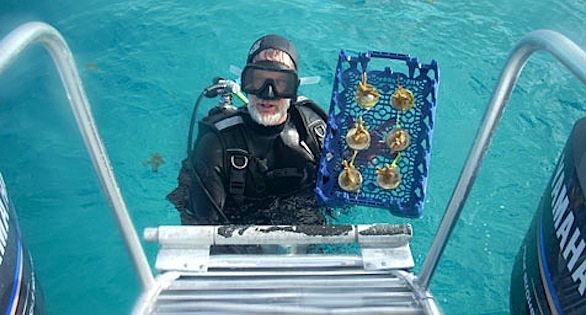
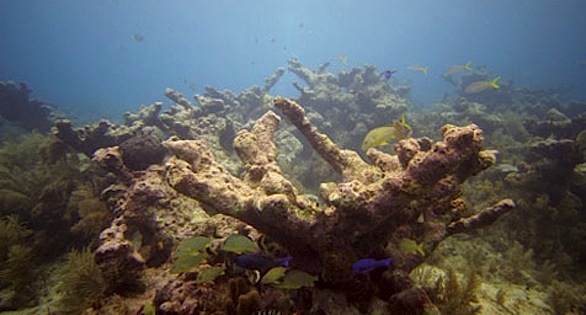
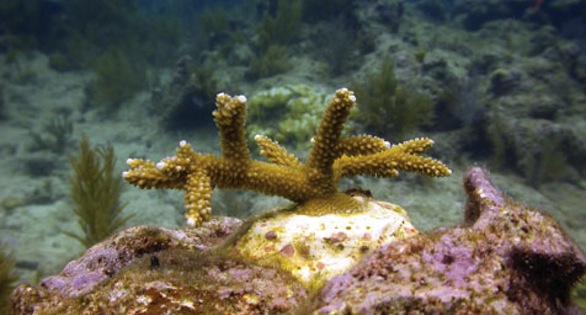
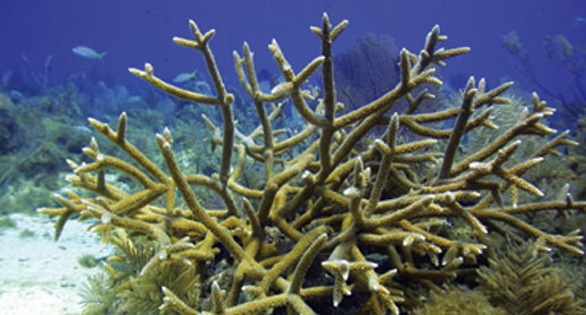
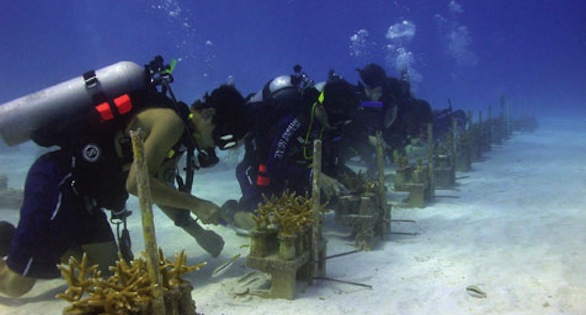




Trackbacks/Pingbacks